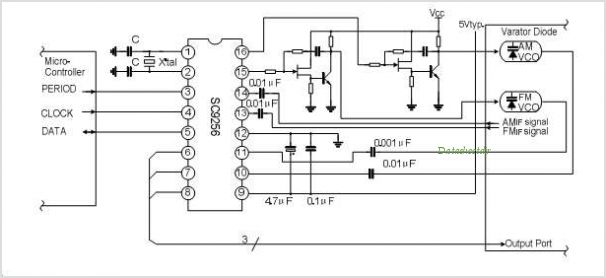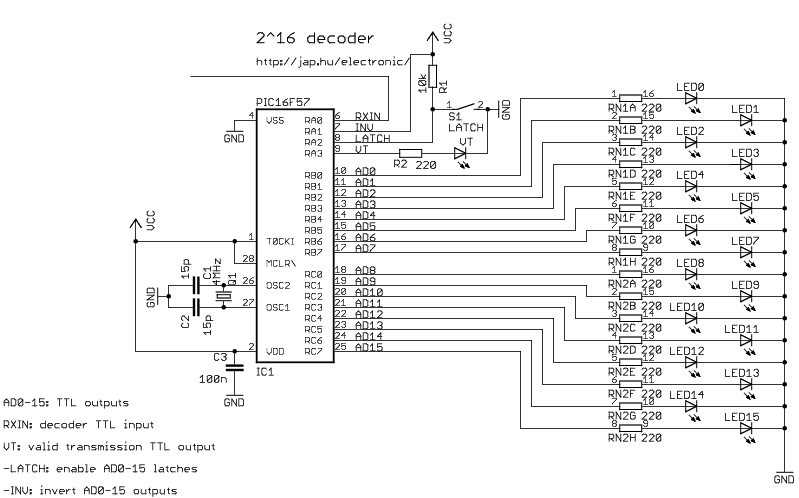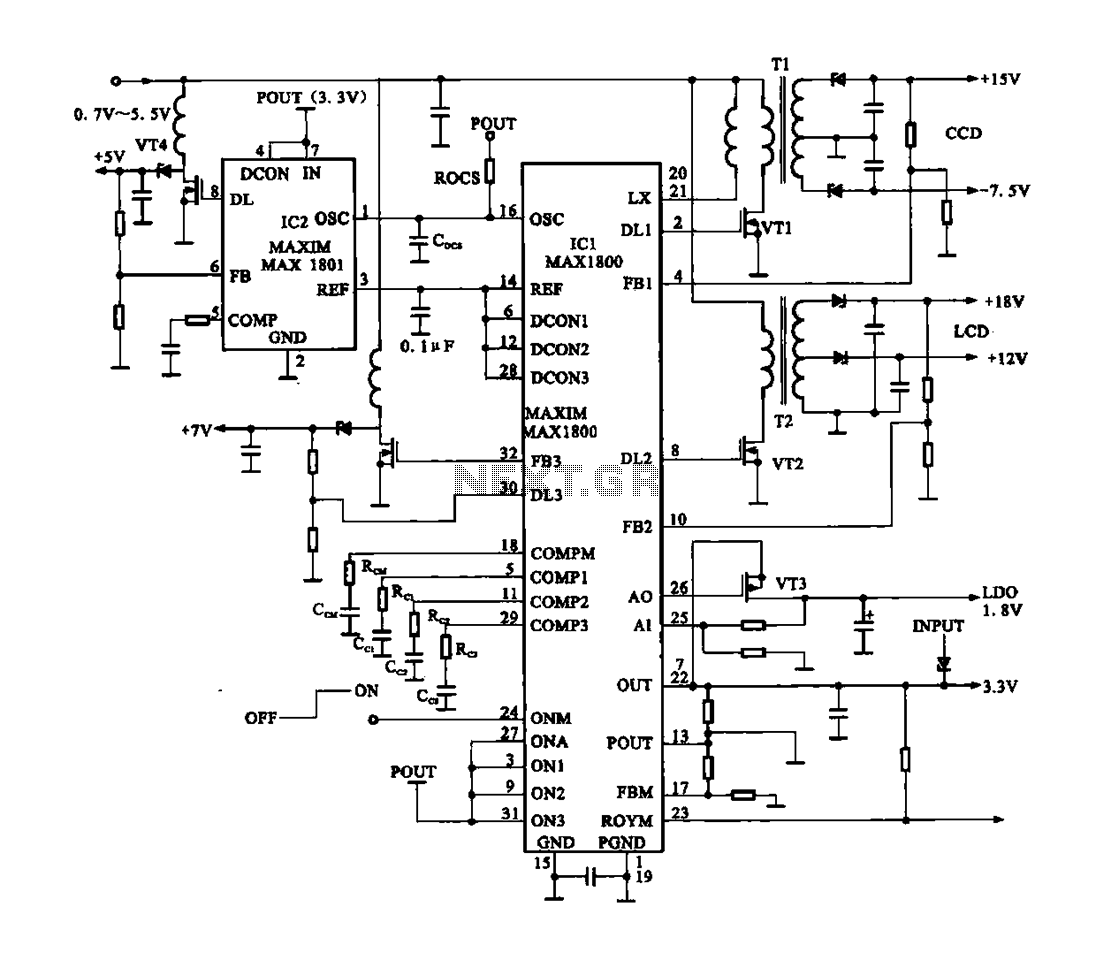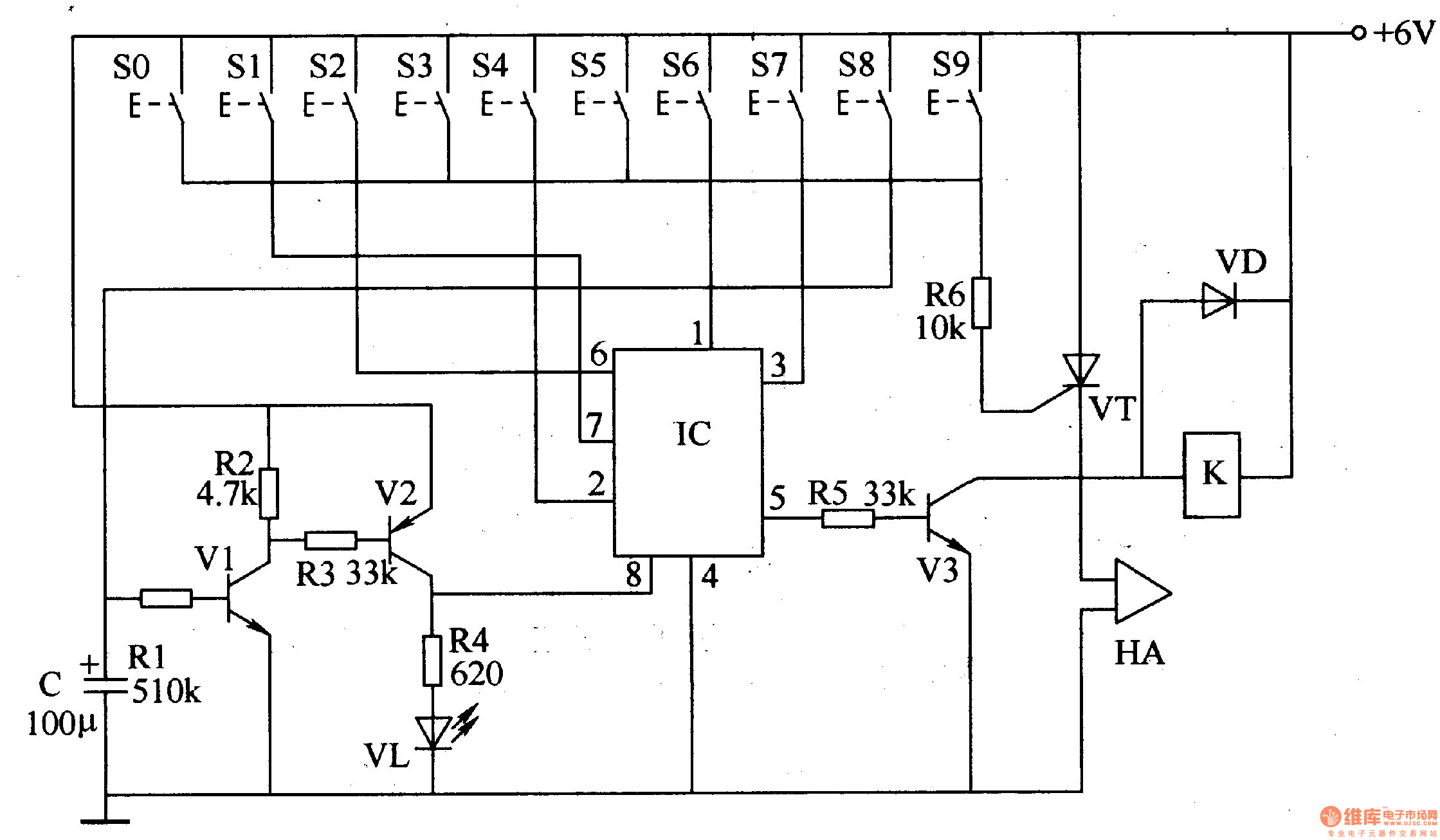
SC9256 PLL FOR DIGITAL TUNING SYSTEM

The SC9270C/SC9270D is a comprehensive DTMF receiver that integrates both bandsplit filtering and digital decoding functions. The filter section utilizes switched capacitor techniques to achieve high- and low-group filtering along with dial-tone rejection. The decoder employs digital counting techniques to detect and decode all 16 DTMF tone pairs into a 4-bit code. The external component count is minimized through on-chip provisions, including a differential input amplifier, clock oscillator, and latched 3-state bus interface by Silan.
The SC9270C/SC9270D DTMF receiver is designed for efficient signal processing in telecommunications applications. The bandsplit filter section is particularly notable for its use of switched capacitor filters, which allows for precise filtering of the DTMF signal while effectively rejecting unwanted dial tones. This is crucial in ensuring that the receiver accurately detects the intended tone pairs without interference from extraneous signals.
The digital decoder section of the SC9270C/SC9270D is engineered to convert the detected DTMF signals into a 4-bit binary code. This is achieved through advanced digital counting techniques that ensure accurate detection of all 16 DTMF tone pairs, which correspond to the numbers 0-9, the asterisk (*) and pound (#) keys, as well as the letters A, B, C, and D. The implementation of these techniques enhances the reliability and speed of the decoding process, making the receiver suitable for applications that require quick and accurate tone recognition.
Minimizing the external component count is a significant advantage of the SC9270C/SC9270D. The integrated differential input amplifier eliminates the need for additional amplification stages, thereby simplifying the design and reducing the overall footprint of the circuit. The inclusion of a clock oscillator on-chip ensures that the system operates synchronously without the need for an external clock source. Furthermore, the latched 3-state bus interface facilitates easy communication with microcontrollers or other digital systems, allowing for seamless integration into a variety of electronic designs.
Overall, the SC9270C/SC9270D DTMF receiver represents a robust solution for applications requiring DTMF tone detection and decoding, with its integrated features providing both performance and efficiency in circuit design.The SC9270C/ SC9270D is a complete DTMF receiver integrating both the bandsplit Filter and digital decoder functions. The Filter section uses switched capacitor techniques for high- and low-group Filters and dial-tone rejection.
Digital counting techniques are employed in the decoder to detect and decode all 16 DTMF tone-pairs into a 4-bit code. E xternal component count is minimized by on-chip provision of a differential input Amplifier clock-oscillator and latched 3-state bus Interface By Silan 🔗 External reference
The SC9270C/SC9270D DTMF receiver is designed for efficient signal processing in telecommunications applications. The bandsplit filter section is particularly notable for its use of switched capacitor filters, which allows for precise filtering of the DTMF signal while effectively rejecting unwanted dial tones. This is crucial in ensuring that the receiver accurately detects the intended tone pairs without interference from extraneous signals.
The digital decoder section of the SC9270C/SC9270D is engineered to convert the detected DTMF signals into a 4-bit binary code. This is achieved through advanced digital counting techniques that ensure accurate detection of all 16 DTMF tone pairs, which correspond to the numbers 0-9, the asterisk (*) and pound (#) keys, as well as the letters A, B, C, and D. The implementation of these techniques enhances the reliability and speed of the decoding process, making the receiver suitable for applications that require quick and accurate tone recognition.
Minimizing the external component count is a significant advantage of the SC9270C/SC9270D. The integrated differential input amplifier eliminates the need for additional amplification stages, thereby simplifying the design and reducing the overall footprint of the circuit. The inclusion of a clock oscillator on-chip ensures that the system operates synchronously without the need for an external clock source. Furthermore, the latched 3-state bus interface facilitates easy communication with microcontrollers or other digital systems, allowing for seamless integration into a variety of electronic designs.
Overall, the SC9270C/SC9270D DTMF receiver represents a robust solution for applications requiring DTMF tone detection and decoding, with its integrated features providing both performance and efficiency in circuit design.The SC9270C/ SC9270D is a complete DTMF receiver integrating both the bandsplit Filter and digital decoder functions. The Filter section uses switched capacitor techniques for high- and low-group Filters and dial-tone rejection.
Digital counting techniques are employed in the decoder to detect and decode all 16 DTMF tone-pairs into a 4-bit code. E xternal component count is minimized by on-chip provision of a differential input Amplifier clock-oscillator and latched 3-state bus Interface By Silan 🔗 External reference





